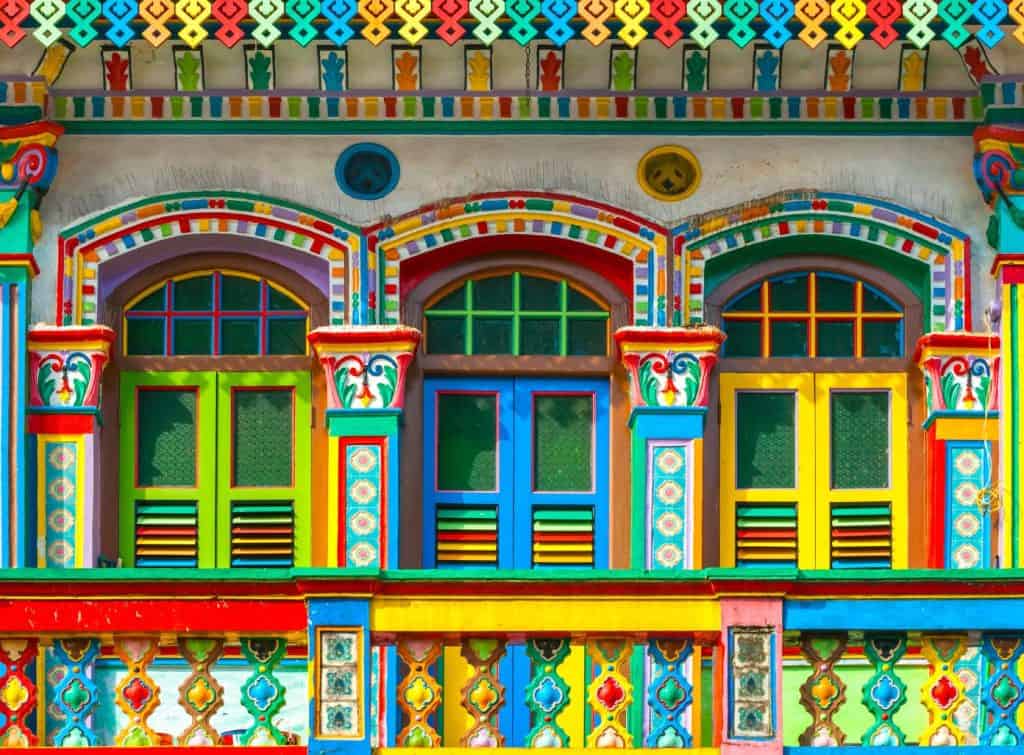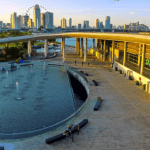Singapore, often regarded as a bustling hub of cultural diversity, is home to a vibrant Indian community that has greatly influenced the city-state’s cultural landscape. From food and fashion to festivals and landmarks, Indian culture has seamlessly integrated itself into Singaporean society, enriching the tapestry of the nation in more ways than one.
The History of Indian Migration to Singapore
The story of Indian migration to Singapore traces back to the early 19th century, when laborers from various parts of India, particularly Tamil Nadu, began flocking to the island in search of better economic opportunities. Their arrival marked the dawn of a new era in Singapore’s development, as their immense contributions laid the foundation for the multicultural city we know today.
Early Indian Settlement in Singapore
Upon their arrival, Indian immigrants settled primarily in the area now known as Little India. This vibrant district quickly became a hub for Indian culture, and its streets, filled with bustling markets and vibrant colors, continue to captivate visitors from all around the world.
Little India soon became a melting pot of different Indian communities, with people from various regions and religious backgrounds coming together to create a unique and diverse neighborhood. The aroma of aromatic spices filled the air as Indian restaurants opened up, offering a taste of authentic Indian cuisine to both locals and visitors.
Temples, adorned with intricate carvings and vibrant colors, became the focal points of religious and cultural activities. The sound of bhajans and chants filled the air as devotees gathered to offer their prayers and seek solace in their faith. Festivals such as Diwali, Pongal, and Thaipusam brought the streets of Little India alive with joyous celebrations, attracting people from all walks of life.
The Impact of Indian Migration on Singapore’s Development
Indian migrants played a crucial role in Singapore’s development, particularly in sectors such as trade, construction, and shipping. Their hard work and determination contributed significantly to the nation’s economic growth, laying the foundation for the prosperous multicultural society we see today.
In the early years of migration, Indian laborers worked on plantations, construction sites, and in the shipping industry. Their skills and expertise were highly sought after, and they played a vital role in transforming Singapore from a small trading post to a bustling port city.
As their numbers grew, Indian migrants started establishing businesses of their own, contributing to the growth of the local economy. They set up shops, trading companies, and textile factories, bringing new products and services to the market. Their entrepreneurial spirit and business acumen helped Singapore become a regional trading hub.
Indian migrants also played a significant role in shaping Singapore’s cultural landscape. They introduced traditional Indian arts, music, and dance forms to the local community, enriching the cultural tapestry of the island. Today, Singapore boasts a thriving Indian arts scene, with numerous dance academies, music schools, and cultural organizations promoting and preserving Indian heritage.
Furthermore, Indian migrants brought with them a strong sense of community and social cohesion. They established mutual aid societies and cultural associations to provide support and a sense of belonging to fellow migrants. These organizations continue to thrive, organizing various social, religious, and cultural activities that help foster a sense of unity among the Indian community in Singapore.
In conclusion, the history of Indian migration to Singapore is a testament to the resilience, hard work, and cultural richness of the Indian community. Their contributions have shaped the city-state into a vibrant and multicultural society, where people from different backgrounds coexist harmoniously, celebrating their diversity while embracing their shared identity as Singaporeans.
The Influence of Indian Culture on Singaporean Society
Indian culture has permeated all facets of Singaporean society, leaving an indelible mark on its culinary scene, fashion trends, and an array of colorful festivals that are celebrated with great fervor.

Indian Cuisine in Singapore
Singapore’s food scene is a gastronomic melting pot, and Indian cuisine holds a treasured place within it. From flavorful curries and biryanis to delicious street food like dosas and roti prata, the diverse flavors of Indian cuisine have become an integral part of the local palate.
Indian Festivals Celebrated in Singapore
Singapore’s multicultural calendar is punctuated by a multitude of Indian festivals celebrated with great enthusiasm. From Diwali, the Festival of Lights that symbolizes the victory of light over darkness, to Thaipusam, a grand Hindu festival honoring Lord Murugan, these celebrations showcase the rich cultural heritage of Singapore’s Indian community.
Indian Fashion Trends in Singapore
The vibrant colors and intricate designs of traditional Indian attire, such as sarees and kurta-pajamas, have also made their way into Singapore’s fashion scene. The fusion of Indian and Western fashion influences creates a unique style that reflects the multicultural fabric of the nation.
Notable Indian Landmarks in Singapore
For those seeking to delve deeper into Indian culture in Singapore, several iconic landmarks offer insights into the community’s heritage and architectural prowess.
Little India: A Slice of India in Singapore
A visit to Little India takes you on a sensory journey through the heart of Indian culture in Singapore. Explore the vibrant streets lined with traditional shops, spice markets, and temples that exude the sights, sounds, and flavors of India.
The Sri Veeramakaliamman Temple: A Testament to Indian Architecture
Nestled within Little India, the Sri Veeramakaliamman Temple stands as a testament to Indian architecture. This stunning temple, dedicated to the goddess Kali, showcases intricate carvings and vibrant sculptures that tell stories from Hindu mythology.
The Role of Indian Community in Singapore’s Multicultural Landscape
Beyond cultural influences, the Indian community in Singapore has also made significant contributions to the nation’s economy and political landscape.

Indian Contributions to Singapore’s Economy
Indian businesses have made substantial contributions to the Singaporean economy, ranging from small family-run enterprises to large corporations. Their entrepreneurial spirit has played a crucial role in driving economic growth and fostering innovation.
Indian Representation in Singapore’s Politics
Indian Singaporeans have also actively participated in the country’s political sphere, with several prominent figures holding positions in parliament and municipal councils. Their representation ensures that the voices and aspirations of the Indian community are heard and addressed.
The Future of Indian Culture in Singapore
As Singapore continues to evolve, Indian culture is poised to play an even more prominent role in shaping the city-state’s identity.
The Growing Influence of Indian Media in Singapore
With the advent of digital media, Indian movies, music, and television shows have found a growing audience in Singapore. The influence of Indian media is gradually permeating Singaporean society, offering a window into the diverse and fascinating world of Indian culture.
The Next Generation of Indian Singaporeans
As Indian culture thrives in Singapore, the next generation of Indian Singaporeans is embracing their heritage with pride. Organizations and community groups are fostering cultural appreciation and providing platforms for young Indian Singaporeans to celebrate their traditions, ensuring the continuity of Indian culture for generations to come.
Exploring the rich tapestry of Indian culture in Singapore is an immersive experience that offers a glimpse into the nation’s diverse heritage. From the vibrant streets of Little India to the explosive flavors of Indian cuisine, the Indian community in Singapore continues to weave its colorful threads into the fabric of multicultural Singaporean society.








